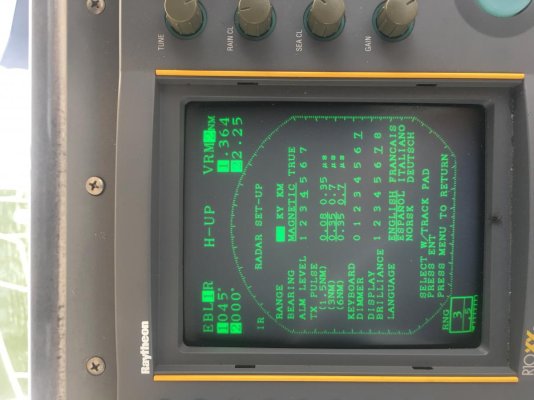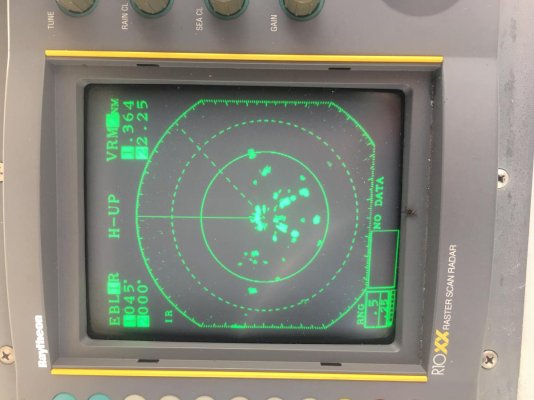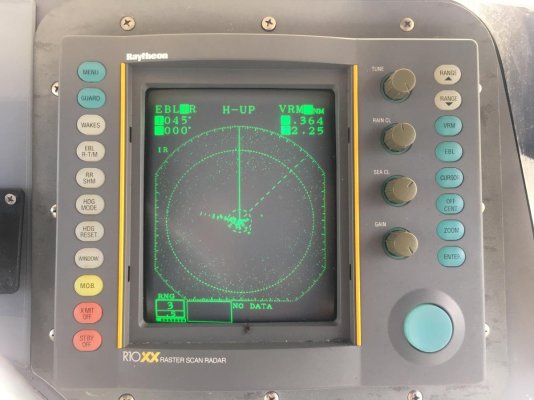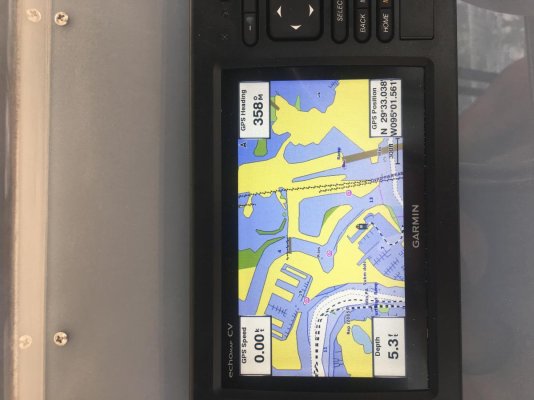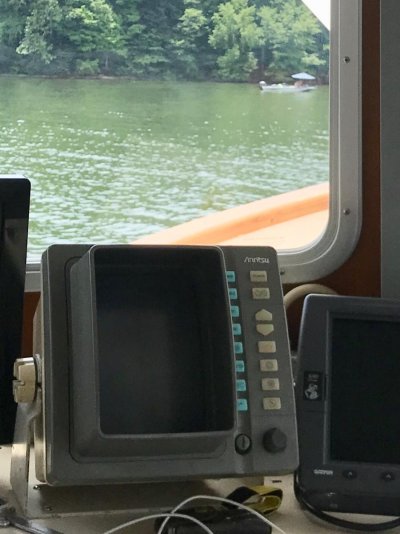On your particular radar, the first thing you need to do is turn the rain control fully ccw to off.
Do the same with the sea clutter and gain knobs
Put the the tune knob at the 12 o'clock position
set the range to 6 miles
Turn the Gain knob up until you get a few "sparkles" on the screen. Not enough gain & its all black. Too much and it's all green
Turn the tune knob until the targets are the biggest-plus theres a bar graph-fill the most boxes on the graph by slowly adjusting the knob
After thats done, the gain & tuning are set. Now you can change ranges to your needs. Most use 1/2 -1 mile range while navigating in close waters.
Clean the picture up with the sea clutter knob. Too much & the targets go away. Not enough & theres too much clutter everywhere.
There you have it! That'll get you started until you become familiar with the operation of a radar.
Also, push and hold the EBL & VRM (Variable range marker & electronic bearing line)buttons to get them off of the screen. They're used mostly for plotting but are just cluttering your screen now. Leave the rain control off unless you're in the rain.

